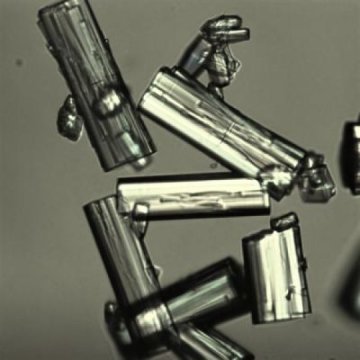[ad_1]
Last October, a University of California, Berkeley, team headed down to the Arizona desert, plopped their newest prototype water harvester into the backyard of a tract home and started sucking water out of the air without any power other than sunlight.
The successful field test of their larger, next-generation harvester proved what the team had predicted earlier in 2017: that the water harvester can extract drinkable water every day/night cycle at very low humidity and at low cost, making it ideal for people living in arid, water-starved areas of the world.
“There is nothing like this,” said Omar Yaghi, who invented the technology underlying the harvester. “It operates at ambient temperature with ambient sunlight, and with no additional energy input you can collect water in the desert. This laboratory-to-desert journey allowed us to really turn water harvesting from an interesting phenomenon into a science.”
Yaghi, the James and Neeltje Tretter chair in chemistry at UC Berkeley and a faculty scientist at Lawrence Berkeley National Laboratory, and his team will report the results of the first field test of a water -collecting harvester in the June 8 issue of the journal Science Advances.
The trial in Scottsdale, where the relative humidity drops from a high of 40 percent at night to as low as 8 percent during the day, demonstrated that the harvester should be easy to scale up by simply adding more of the water absorber, a highly porous material called a metal-organic framework, or MOF. The researchers anticipate that with the current MOF (MOF-801), made from the expensive metal zirconium, they will ultimately be able to harvest about 200 milliliters (about 7 ounces) of water per kilogram (2.2 pounds) of MOF, or 3 ounces of water per pound.
But Yaghi also reports that he has created a new MOF based on aluminum, called MOF-303, that is at least 150 times cheaper and captures twice as much water in lab tests. This will enable a new generation of harvesters producing more than 400 ml (3 cups) of water per day from a kilogram of MOF, the equivalent of half a 12-ounce soda can per pound per day.
“There has been tremendous interest in commercializing this, and there are several startups already engaged in developing a commercial water-harvesting device,” Yaghi said. “The aluminum MOF is making this practical for water production, because it is cheap.”
Yaghi is also working with King Abdul Aziz City for Science and Technology in Riyadh, Saudi Arabia, and its president, Prince Dr. Turki Saud Mohammad Al Saud, on the technology as part of their joint research Center of Excellence for Nanomaterials and Clean Energy.
Super-absorbent MOFs
Yaghi is a pioneer in metal-organic frameworks, which are solids with so many internal channels and holes that a sugar-cube-size MOF might have an internal surface area the size of six football fields. This surface area easily absorbs gases or liquids but, just as important, quickly releases them when heated. Various types of MOFs are already being tested as a way to pack more gas into the tanks of hydrogen-fueled vehicles, absorb carbon dioxide from smokestacks and store methane.
Several years ago, Yaghi created MOF-801, which absorbs and releases water easily, and last year he tested small quantities in a simple harvester to see if he could capture water from ambient air overnight and use the heat of the sun to drive it out again for use. That harvester, built by a collaborator at MIT using less than 2 grams of MOF, proved that the concept worked: the windows fogged up in the sun, though the researchers were not able to collect or accurately measure the water.
That same harvester was transported to the desert earlier this year and worked similarly, though again only droplets of water were generated as a proof of concept.
For the new paper, the UC Berkeley team — graduate student Eugene Kapustin and postdoctoral fellows Markus Kalmutzki and Farhad Fathieh — collected and measured the water and tested the latest generation harvester under varying conditions of humidity, temperature and solar intensity.
The harvester is essentially a box within a box. The inner box holds a 2-square-foot bed of MOF grains open to the air to absorb moisture. This is encased in a two-foot plastic cube with transparent top and sides. The top was left open at night to let air flow in and contact the MOF, but was replaced during the day so the box could heat up like a greenhouse to drive water back out of the MOF. The released water condensed on the inside of the outer box and fell to the bottom, where the researchers collected it with a pipette.
The extensive field tests lay out a blueprint allowing engineers to configure the harvester for the differing conditions in Arizona, the Mediterranean or anywhere else, given a specific MOF.
“The key development here is that it operates at low humidity, because that is what it is in arid regions of the world,” Yaghi said. In these conditions, the harvester collects water even at sub-zero dew points.
Yaghi is eagerly awaiting the next field test, which will test the aluminum-based MOF and is planned for Death Valley in late summer, where temperatures reach 110 degrees Fahrenheit in the daytime and remain in the 70s at night, with nighttime humidity as low as 25 percent.
[ad_2]















